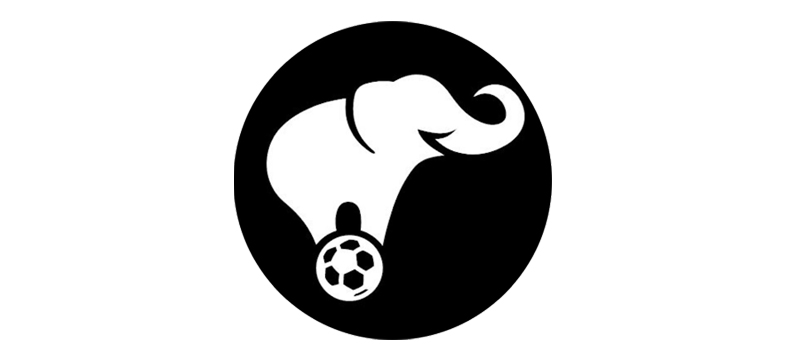When HUST decided to work with dementia charities on our latest community initiative we soon realised that there was a type of dementia that we couldn’t ignore: footballers are far more likely than the general public to suffer from a brain disease known as CTE (Chronic Traumatic Entrophy). It is caused by repetitive impacts to the head, exactly what happens to players who head the ball a lot in training as well as during matches.
That’s why our fund-raising match against Darlington Supporters Group at Grayfields on Sunday 24 September will be free of headers. It’s also why we’re linking up with a new charity called Head Safe Football, as well as Hartlepool’s own Hospital of God who support people suffering with all forms of dementia, including the much better known Alzheimer’s disease.
So, to kick off our initiative around dementia which also includes a live Switch of Play podcast and an invitation for a group of dementia sufferers to come and watch Pools, we met with Dr Judith Gates, founder of Head Safe Football and wife of Bill Gates, a Boro legend at centre half, who now has strong symptoms of late-stage CTE.
Hello Judith and thanks for meeting with us. First, could you explain how you became involved in campaigning about the links between football and dementia.
My husband Bill was a professional footballer for Middlesbrough from 1961 to 1974, he played 335 first team games, by and large at centre half. The press accounts of his playing days usually included the phrase “Gates was strong in the air.” He was a prolific header of the ball and practiced with a hundred headers a day in training.
Throughout his career he suffered with migraines and eventually retired because of them on the eve of his 30th birthday. He had symptoms of what now is called CTE (Chronic Traumatic Encephalopathy) while he was playing and, after he finished, he regularly said, “You know, one day I’ll get dementia because of all those balls I headed, I can see what is happening to the generation ahead of me.”
Sadly, his prophecy became reality in his mid to late 60s we started noticing the signs and he was diagnosed with cognitive impairment. As a family we did all we could – post-it notes around the house, exercises in the evening where we’d sit and ask what was best about the day, helping him to remember. Then the practicalities took over, I started to manage our home, bills and so on. Bill’s symptoms culminated in demented, confused and tormented behaviour. On a number of occasions, he asked me or our son to get him tablets or a gun as he couldn’t face living like that. Suicidal ideation is a symptom of CTE. At times, he even thought the contact lenses he used to play in were still in place and scratched at his eyeballs to take them out.
He became obsessively involved in things like walking all the time, compulsively, up to ten miles a day and we had to walk with him because he couldn’t find his way home. Once he ended up in hospital having walked himself into exhaustion.
He’s now at what they describe as flat effect, emotionless, can’t walk, barely speaks, needs help with eating, has a hospital bed and has to be lifted into a chair. Bill is completely dependent but then, very occasionally, we see a flash of Bill. We get that when we put a ball in his hands, even with his eyes closed, which they are for 21 hours a day, he’ll throw it. We try saying ‘squeeze my hand if you hear me’, sometimes he will and sometimes he won’t. But when his eyes are open, if we put a ball at his feet he’ll always kick it, in his wheelchair he still kicks the ball. Having lost almost everything because of the game he loved, he still loves it.
That’s incredibly sad and I think most football supporters reading this will think what can be done? Is that what you asked yourself?
There were a couple of things. When Bill was diagnosed with CTE in 2017 after some very high-end tests in North America, brain scans, spinal taps etcetera he was told definitively that he did not have
Alzheimer’s. He had a specific protein in his spinal fluid that showed the cause of his problems was CTE, which is almost always caused by repetitive head impacts. He was told that the game he loved
was going to kill him and he turned to me and our sons and said, “I want two things from you. Help me to make the most of the rest of my life,” which we’ve done, “and do all that you can to stop anyone else suffering from this dreadful disease.” Which we’re doing.
That’s why I’m involved in the charities and getting out there to raise awareness. I’m an academic and I’ve brought that discipline to researching this. The truth is that we know that CTE is taking a toll
on professional players and also anybody who is exposed to repeated head impacts, potentially including young people, the research is ongoing. Our aim is to protect the players of today and tomorrow. That’s Bill’s legacy, he asked us for a solemn promise that we would do this, so we are.
I appreciate that there is still a lot of research to be done but do you have an idea about what you’re likely to propose as a way of keeping players safe?
The reality is that prevention is the best action we can take. There is currently no definitive diagnosis during life. At Bill’s request his brain will go to be studied in Glasgow upon his death because it is only through post-mortem examinations that anything can be learned for certain.
The challenge we have is that we know that repetitive head impacts cause harm, and we know that professional footballers, very healthy people, are five times more likely to develop dementia than the
general population. On top of that, the US health bodies have openly stated that repetitive head impacts are the cause of CTE. We know that head impacts are the cause but we don’t know how many have to happen to cause damage. It’s a bit like the tobacco argument, we know the link to cancer but do you have to smoke one a day, or thirty a day, or will ten a day do it?
Our current thinking is why not reduce heading? In training where nobody is paying to watch, why would defenders like Bill do a hundred headers a day? Head Safe Football wants to reduce heading with the knowledge that although that might not be a cure it will be better than the current situation. The difficutly we have is that this is a thirty-year problem, it takes that long for the dementia symptoms to really manifest themselves. Bill had a few during his career but from 30 to 60 there were odd signs, that we can spot with hindsight, but nothing major. We’ve got players we’re talking to now who have retired and they’re living in dread. They tell us things like every time they lose their car keys they’re thinking, “Is this it? Has it started? Have I got TAL proteins spreading in tangles across my brain?” All we can do is make the situation better than it was.
I’m not advocating banning headers, although games like the one you’re having against Darlington’s Trust are really interesting to watch. You see how the game compensates and how different skills come in. I am advocating reducing heading at every level of the game, right down to school level, because we know the brain is fragile.
People must be becoming aware just because of the high-profile players in the media. Jack Charlton springs to mind, Gordon McQueen who followed him at Leeds…
Hayley, Gordon’s daughter, and Yvonne, his wife are among our supporters. We had a parade at Spennymoor of 66 life sized silhouettes representing 66 professional footballers who have died or are dying of his disease. And we must make it clear that this isn’t Alzheimer’s, or any of the other forms of dementia, these are deaths specifically caused by CTE.
Do you have any other aims?
Yes, to get rid of the stigma, to speak out and say openly that this is a brain disease. We have to get away from phrases like ‘he’s losing it’ or ‘going daft’. We talk about knee replacements and make no judgement but the brain is damaged or diseased just like a knee, we can’t replace a brain but that’s the only real difference. We have to be pragmatic and say that brain disease has to be taken into account, no euphemisms, call it what it is, face facts and take action. We have to say repetitive head impacts cause brain disease and headers are repetitive impacts, your brain is fragile so protect it.
I suppose it is up to the governing bodies, the clubs as employers, the schools and junior clubs to accept that they have a duty of care.
That leads to our next step. Having founded Head for Change, which considered rugby as well as football, I’ve come to realise that I can do more by concentrating on football, Bill’s game. So, I’ve established a football focused charity, Head Safe Football, which formally launches on 18 September – just in time for HUST’s match. Our symbol is an elephant because CTE brain disease is the elephant on the pitch that isn’t being addressed, people are pretending it isn’t there.
We want everyone in the football community to take responsibility, don’t leave it to the professionals, we’re launching a campaign called Football United Against CTE. We’re also looking for Head Safe Trailblazers, our first is a club in Killingworth who are adopting our principles aimed at
protecting the brains of their players. We want to campaign across all of football, including the governing bodies but they have a lot of corporate interests and aren’t easy to engage with. We’ll find our trailblazers in the women’s game, the grassroots game, among the junior clubs, maybe in the National League, they can then help others and eventually the big clubs will follow.
How would you like to conclude?
First, things do change and we adapt. Look at the introduction of seatbelts and smoking bans. In football, heading increased with changes in the offside law in the 1920s, people played balls through
the middle more and you got the emergence of what we now call the traditional centre half, an expert in defensive heading. Things aren’t cast in stone, change happens, why not change to protect people?
Second, can I nail a myth that we come across all the time – that CTE will reduce because it was caused by the old, heavy leather balls. The thudding wet ones that Bill played with, that Nobby Stiles and Bobby Charlton played with, they’re the ones that caused the problem and when that generation are gone the problem will die with them. It just isn’t true. Modern balls are designed not to take on water and get heavier but they’re also design to travel much faster and the game is faster. Current
research shows that by measuring the force of impact through velocity and weight the players of today are in just as much danger as the players of the 60s.
The other myth is that there isn’t as much heading in the game. Analysis of filmed matches says that this just isn’t true, heading levels remain similar. Anybody hoping that this will just go away is fooling themselves – the impacts are just as strong and there is just as much heading. If we don’t start to make changes we’ll see many more players, professional and amateur, killed by the game they love.

